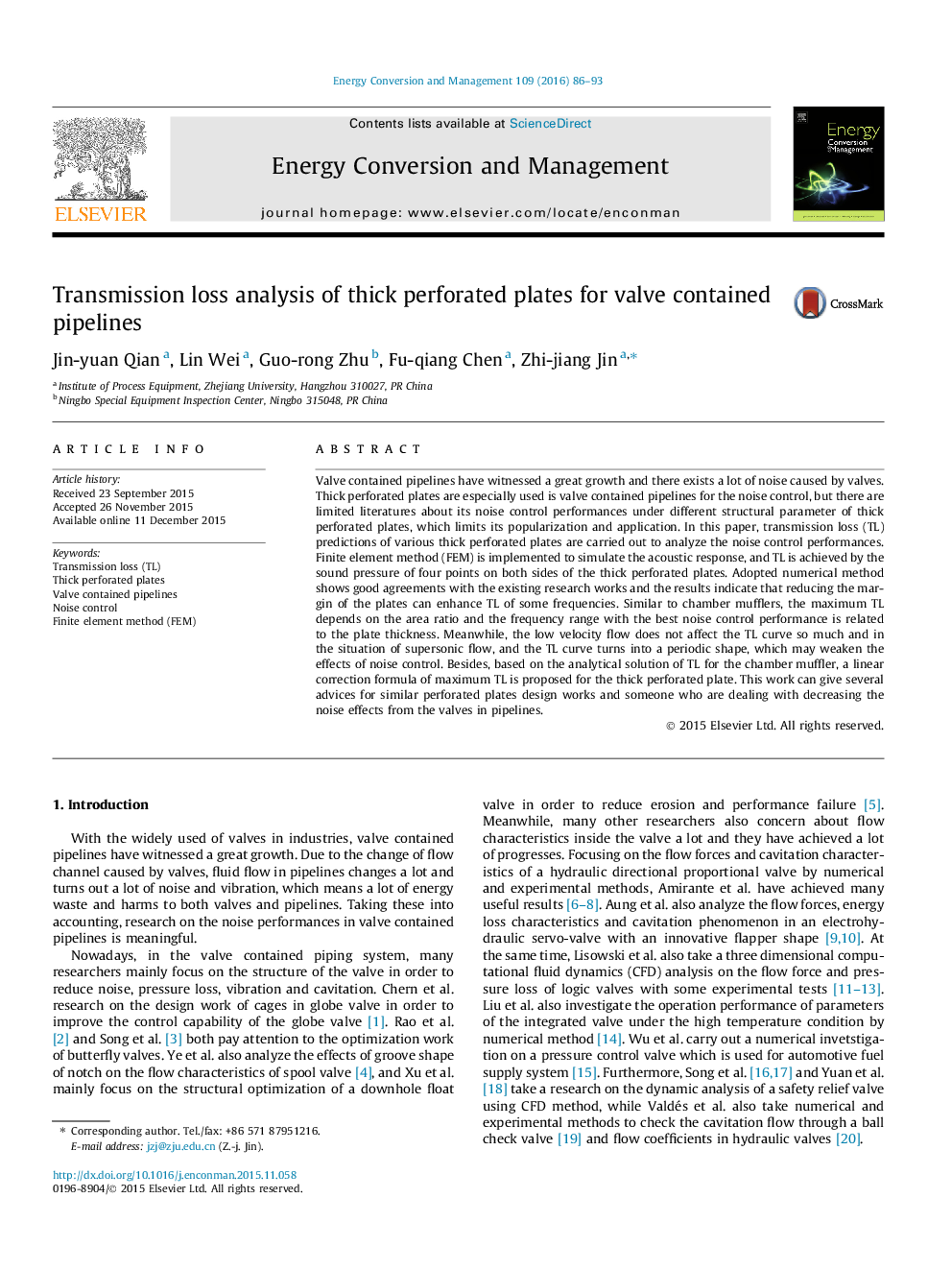| Article ID | Journal | Published Year | Pages | File Type |
|---|---|---|---|---|
| 760422 | Energy Conversion and Management | 2016 | 8 Pages |
•Thick perforated plate is used in valve contained pipelines for noise control.•Finite element method (FEM) is used to simulate the acoustic response.•Transmission loss (TL) predictions of thick perforated plates are carried out.•Effects of shapes and mean flow on transmission loss are investigated.•A linear correction formula of maximum TL is proposed for thick perforated plate.
Valve contained pipelines have witnessed a great growth and there exists a lot of noise caused by valves. Thick perforated plates are especially used is valve contained pipelines for the noise control, but there are limited literatures about its noise control performances under different structural parameter of thick perforated plates, which limits its popularization and application. In this paper, transmission loss (TL) predictions of various thick perforated plates are carried out to analyze the noise control performances. Finite element method (FEM) is implemented to simulate the acoustic response, and TL is achieved by the sound pressure of four points on both sides of the thick perforated plates. Adopted numerical method shows good agreements with the existing research works and the results indicate that reducing the margin of the plates can enhance TL of some frequencies. Similar to chamber mufflers, the maximum TL depends on the area ratio and the frequency range with the best noise control performance is related to the plate thickness. Meanwhile, the low velocity flow does not affect the TL curve so much and in the situation of supersonic flow, and the TL curve turns into a periodic shape, which may weaken the effects of noise control. Besides, based on the analytical solution of TL for the chamber muffler, a linear correction formula of maximum TL is proposed for the thick perforated plate. This work can give several advices for similar perforated plates design works and someone who are dealing with decreasing the noise effects from the valves in pipelines.
